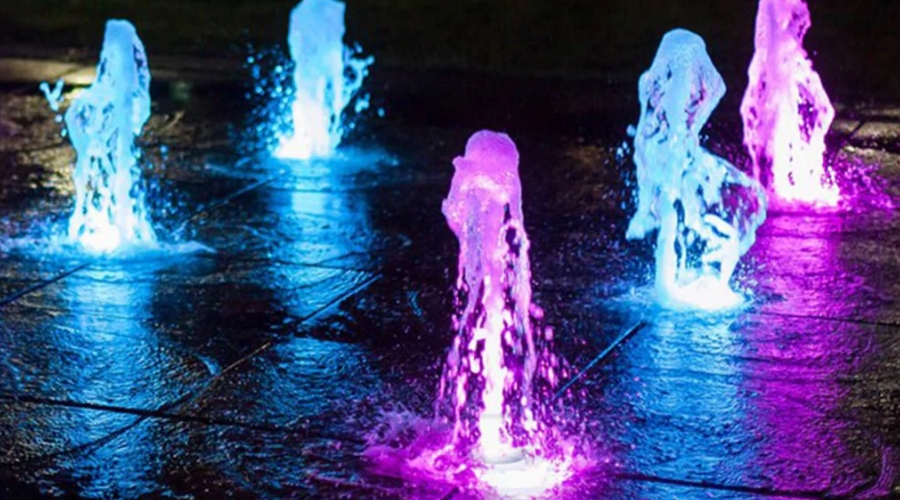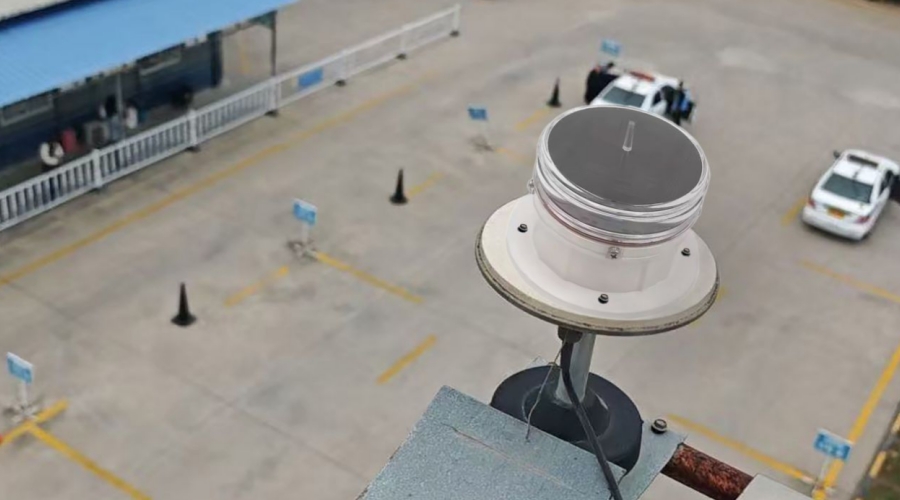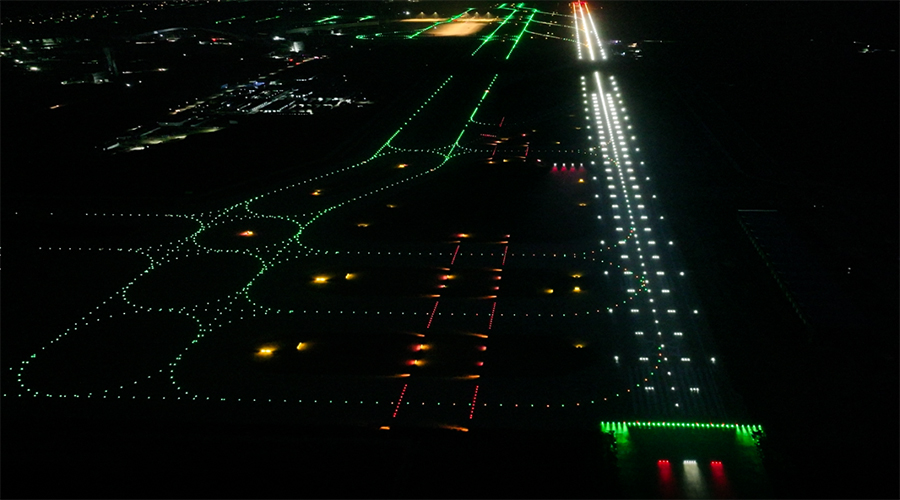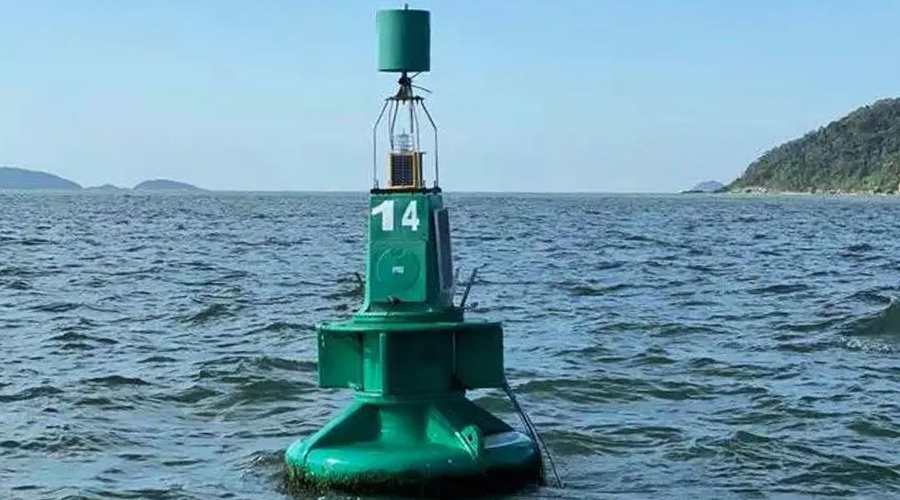The Marine Navigation Signal Lights, also known as a marine signal lights, is used to show the state of ship sailing or parking. Navigation signal lights of various ships are crucial to the safe navigation of ships.
Powered Vessels
Unless otherwise specified, a single powered vessel shall display a white masthead navigation signal lights, a red port light, a green starboard light, and a white stern light when sailing.
Vessels of 50 meters or more in length shall display another white masthead light on the mizzen mast; except for speedboats, powered vessels of less than 12 meters in length may display a white all-round light and a red-green combination light, or a red, white, and green tricolor light, in place of the above signal lights when conditions do not permit.
| Vessel length | Light configuration |
| Under 12 meters (excluding speedboats) | White ring light and red/green combination light, or one red, white and green light |
| 12 meters and above | White masthead light, red port light, green starboard light, white stern light, additional white masthead light on the rear mast |

Fleet
- When towing, a tugboat shall display the following signal lights in addition to the sidelights and stern light:
(1) When a vessel is being towed, two white masthead lights shall be displayed.
(2) When pushing a vessel or rafting, three white masthead lights shall be displayed. If a tugboat has difficulty displaying the above lights, it may display them on the most suitable vessel in the fleet.
(3) When the raft is raised, one masthead light, one green light,t, and one white light shall be displayed.
(4) A tugboat lifting or towing a vessel or raft may also display another white light behind the chimney or mast, above the stern light, to facilitate the maneuvering of the vessel or raft. - A vessel or raft towed or pushed by a crane shall display the following lights while sailing:
(1) A vessel being towed or pushed shall display red and green sidelights. When forming a multi-row convoy, the vessel in the leftmost row shall display only red sidelights and the vessel in the rightmost row shall display only green sidelights. The bow of the first vessel in the convoy shall display a self-illuminating bow light, which shall not be displayed after it is illuminated. A white light shall also be displayed when the stern of the pushed vessel exceeds the bow of the tugboat. The last row of the tugboat convoy shall display a white stern light.
(2) When a vessel of 30 meters in length or more is sailing in single file by towing, each vessel may use a white halo light instead of red and green sidelights.
(3) When a human-powered boat, sailboat, or object is being towed or pushed, a white halo light shall be displayed. When pushing, the rear lights shall not be displayed. When grouped into a multi-row numerical sequence, they shall be displayed in the outermost left and right columns.
(4) When towing a raft, one white light should be lit at least one meter above the raft surface at the four corners of the raft; when pushing a raft, one white light should be lit at least one meter above the raft surface at the two front corners of the raft. When the raft is upright, the other lights must not be exposed.
| Situation | Lights to be displayed |
| Tugboat | Two white masthead lights |
| Pushing a boat or arranging a raft | Three white masthead lights; if difficult, display on the most suitable boat |
| Towing a hoisted raft | One masthead light, one green light, one white light |
| Tugboat for lifting and pulling | Another white light behind the funnel or mast, above the sternlight |
| Towing or pushing by a crane (ship) | Red and green sidelights; white light if stern is beyond the bow of the tugboat |
| Single-row towing (vessel length ≥ 30m) | Replace the red and green sidelights with a single white ring light |
| Towing or pushing (a ship, sailboat, object) | White ring lights; display in the outermost column, for grouping multiple rows |
| Raft towing | One white light in each corner, at least one meter from the row face |
| Raft pushing | One white light in each of the first two corners, at least one meter from the row face |

Workboat
When the engineering vessel has not entered the construction site or has withdrawn from the construction site, it shall display the signals specified for general ships. When entering the construction site, the following lights and numbers shall be displayed;
- After the engineering vessel is fixed at the construction site, it shall display three ambient lights at night, and the connecting line forms an equilateral triangle with the tip pointing upward. The top of the triangle is a red halo light, and the two sides of the bottom are illuminated by white halo lights on the navigable side and red halo lights on the non-navigable side. During the day, a number is hung horizontally at both ends of the mast, with a sphere on the navigable side and a cross on the non-navigable side.
- When a self-propelled engineering vessel is under construction, in addition to displaying the navigation signal light of a motor vessel. At night, red, white and red halo lights are displayed, and ring-shaped, diamond-shaped and spherical lights are hung during the day. When a construction vessel towed by a tugboat is under construction, in addition to the lights specified in Article 29, it shall also display the same lights and types as self-propelled construction vessels. 29. The mud discharge pipe extended by the engineering vessel shall display a white halo ring light every 3 meters at the head and tail of the pipe. When there are divers working underwater on the ship, a red halo is displayed at night and an “A” signal flag is hoisted during the day.
| Situation | Night lights |
| Not at the construction site or evacuated | Observe general ship signals |
| Fixed location at the construction site | Red ring lights (top of triangle), white halo (bottom sides), red ring lights (non-navigable side) forming an equilateral triangle |
| Self-propelled engineering vessel under construction | Red, white and red halo lights |
| Towed construction vessel under construction | Same lights and types as for self-propelled vessels under construction, plus lights as specified in regulation 29 |
| Drain pipe extended | White ring lights at bow and stern, 50 meters apart |
| Divers working underwater | Red halo |
Maritime Cruisers and Stake-beacon Vessels
When patrol boats are on duty, they should display one sidelight, one stern light, and one red flashing rotating light at night. When beacon vessels are sailing, they should display two sidelights, a stern light and a green circular light at night; when moored, they should display two green circular lights.

Dangerous Goods Ships
When berthing, loading and unloading, and sailing, ships carrying explosive, flammable, highly toxic, and radioactive dangerous goods shall, in addition to displaying the signals of ordinary ships, display red ring lights at the horizontal position of the mast at night. Hoist the “B” signal flag.
The crew should regularly check the ship’s navigation lights. The inspection method is as follows:
- The setting of navigation lights and signal lights should comply with regulations
- The navigation light control box is powered by two power supplies, one of which must be powered by the main switchboard or the emergency switchboard, and the two power conversion switches should be located on the control box.
- When the main power supply is a battery, only one power supply can be provided.
- The navigation light control box should be equipped with an audible and visual alarm signal device when each navigation light fails. When small ships, navigation lights, and signal lights are controlled by the same control box, only light alarm signals are allowed.
- Each navigation light (on the control box) should be equipped with a separate control switch, fuse, and opening and closing indicator device, and should be equipped with a nameplate or sign.
- The signal lights are centrally controlled and protected by the signal light control box located in the driver’s room.
- For unmanned vessels such as unmanned barges, non-self-propelled engineering vessels, and barges, it is allowed to install the signal light control box in a place where someone is on duty or it is easy to manage.
| Demand | More information |
| Navigation lights | Complies with the requirements |
| Navigation light control box | – Powered by two power sources (main switchboard or emergency switchboard) – Two power transfer switches on the control box – Only one power source is allowed for the battery-powered main power supply |
| Alarm system | Each light failure has an audible and visual alarm |
| Small vessel control | If the same control box is used to control small craft, navigation lights and signal lights, only light alarm signals are allowed |
| Personal navigation lights | Each light on the control box should have: – Individual control switches – Fuse – On/off indicator – Nameplate or logo |
| Signal lights | Controlled and protected centrally by the signal light control box in the wheelhouse |
| Unmanned boats | The signal light control box is allowed to be placed in a place that is accessible or easy to manage for the duty personnel |





